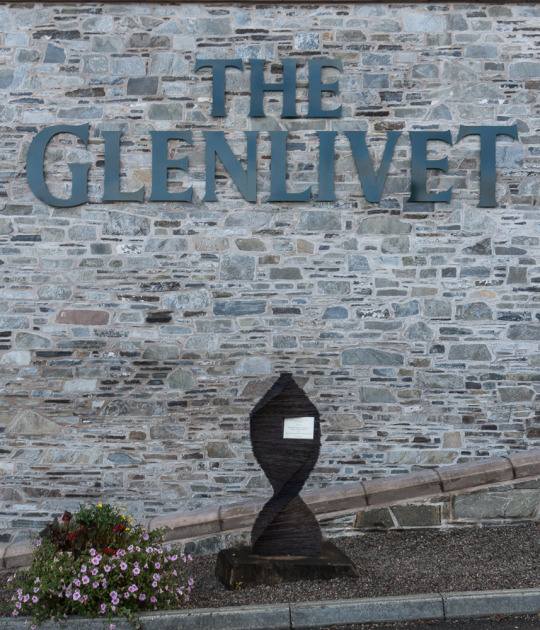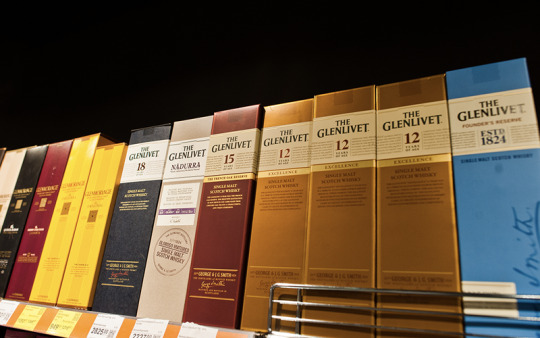#The Glenlivet distillery
Explore tagged Tumblr posts
Text

#whisky#whiskycollection#whiskylife#whiskylover#whiskycollector#scotch#singlemalt#whisky glass#distillery#classy life#glenlivet
5 notes
·
View notes
Text
Glenlivet 12 Year and 15 Year Signatory Vintage
Review by: ZoidbergOnTheRocks Glenlivet isn’t normally a whisky I reach for, but I’ve got this random mini of the 12yr, and somewhere along the way I ended up with an interesting sample of a Signatory bottling. Feels ripe for a side-by-side. Tasted on 11/14/2020, neat in a Glencairn. Glenlivet 12 Year Glenlivet 12 year old, 40% ABV in a 5cl mini. No info on coloring, filtering, or bottling…

View On WordPress
#Distillery Bottling#Glenlivet#Rated 60-69#Rated 70-74#Scotch#Scotch Review#Signatory Vintage (SV)#Single Malt#Speyside#Whisky Review#ZoidbergOnTheRocks
0 notes
Text

On July 25th 1805 John Walker was born in Kilmarnock, nowadays remembered as Johnnie Walker, he went on to found the Johnnie Walker whisky distillery empire.
When his father Alexander died in 1820, John was left £417 in trust. In 1820 the trustees invested in an Italian warehouse, grocery, and wine and spirits shop on King Street in Kilmarnock.
An 1852 flood destroyed virtually all of the stock Walker held, but the business recovered within a couple of years. His own whisky brand, then known as "Walker's Kilmarnock Whisky" was popular locally.
In 1833 John married Elizabeth Purves. Their son Alexander had apprenticed with a tea merchant in Glasgow, and there learned the art of blending tea. When he returned to take over the business from his ailing father, he used those skills to create Old Highland Whisky, (eventually renamed Johnnie Walker Black Label) the first of Walker's blends which became popular far beyond Ayrshire.
Although he gave his name to the whisky, John Walker was a far less important figure to the brand than his son, Alexander, as it was he who persuaded his father to abandon the narrow realm of the grocery trade and to go into wholesale trading. At the beginning, the firm offered a range of spirits: Campbeltown whisky from the Kintyre Peninsula; whisky from the Inner Hebridean Island of Islay, with its pungent smokey flavour; patent still, or grain, whisky; and "Glenlivet", Speyside whisky. Even so, whisky sales under John Walker represented just 8 percent of the firm's income; by the time Alexander was ready to pass on the company to his own sons, that figure had increased to between 90 and 95 percent.
The magnificent Johnnie Walker Bond building still stands in the town centre and has a statue of John, as seen in the picture, which does not take the form of the famous 'Striding Man' image created in the first half on the 20th Century and which is recognised the world over - along with the 'Born 1820 Still Going Strong' motto.
Sadly, the closure of the huge Johnnie Walker bottling plant in 2012, (once the world's largest) and the associate blending and bond operations in and around the town severed all links with Kilmarnock.
14 notes
·
View notes
Text




Glenlivet Distillery, Speyside, Scotland
2 notes
·
View notes
Text
Wed July 26
After breakfast at Culliss House, we drove generally south and East from Inverness, intending to see some castles (Drum & Kindrachit) a standing stone circle (Tomnaverie) and the Crathie Kirk. Instead we wandered a bit off course, and saw the Drummin Castle (ruins), The Glenlivet distillery (from the outside), and the Tomnaverie circle. But the drive was again very beautiful, and we arrived in Aboyne in time for a drink before dinner in the Boat Inn, where we’re also staying. Took a nice constitutional along the River Dee before retiring.
1 note
·
View note
Text
From Barley to Bottle: The Influence of Scotch Advertising on Global Perception
Scotch whisky, or simply "Scotch," is more than just a spirit; it is a testament to Scottish heritage, craftsmanship, and a long-standing tradition that has captured the hearts of enthusiasts worldwide. Known for its complexity and depth of flavor, Scotch whisky is revered as a sophisticated drink that offers a unique experience with every sip. But beyond the spirit's quality lies an art form that has been pivotal in shaping its global perception—Scotch advertising.
The Essence of Scotch Whisky
The Basics of Scotch
Scotch whisky is defined by its origin, ingredients, and meticulous production process. To be officially recognized as Scotch, the whisky must be distilled and matured in Scotland for at least three years in oak barrels. It is typically made from malted barley, though grain whiskies are also used in blends. There are several types of Scotch whisky, each offering unique characteristics:
Single Malt Scotch: Produced from malted barley at a single distillery, offering distinct flavors that reflect the distillery's unique methods and environment.
Blended Scotch: A combination of single malts and grain whiskies, providing a balanced and approachable taste.
Single Grain Scotch: Made from malted barley and other grains, offering a lighter and often more subtle flavor.
The Flavor Profile
Scotch whiskies boast a wide range of flavors, from the smoky and peaty notes of Islay whiskies to the sweet and fruity undertones of Speyside malts. This diversity of flavors is one of Scotch's key attractions, providing something for every palate.
The Evolution of Scotch Advertising
Early Scotch Advertising: Establishing Elegance
In the early days of Scotch advertising, brands focused on establishing the drink as a symbol of elegance and luxury. Advertisements often featured sophisticated imagery and language, portraying Scotch as the drink of choice for the elite and well-to-do. This approach was effective in positioning Scotch as a prestigious product, appealing to those who sought to associate themselves with a refined lifestyle.
Mid-20th Century: Broadening Appeal
As Scotch whisky gained popularity beyond its traditional markets, advertising strategies evolved to broaden its appeal. Advertisements began to highlight the versatility of Scotch, showcasing it as a drink suitable for various occasions, from formal events to casual gatherings. This shift in focus helped Scotch brands reach a wider audience, attracting both seasoned enthusiasts and newcomers to the world of whisky.
The Rise of Storytelling in Scotch Advertising
In recent years, storytelling has become a central theme in Scotch advertising. Brands emphasize the heritage, craftsmanship, and unique narratives behind each bottle, creating a deeper connection with consumers. This approach resonates with those who value authenticity and seek a more meaningful experience with their whisky.
Example: Glenfiddich's "Maverick Whisky Makers" Campaign
Glenfiddich's "Maverick Whisky Makers" campaign is a prime example of storytelling in Scotch advertising. The campaign highlights the brand's pioneering spirit and dedication to quality, focusing on the stories of its founders and the distillery's innovative approach to whisky-making. This narrative-driven strategy effectively engages consumers and builds brand loyalty.
Modern Strategies: Inclusivity and Innovation
Today's Scotch advertising strategies reflect a more inclusive and innovative approach, recognizing the diverse and evolving interests of consumers.
Gender-Inclusive Campaigns
Scotch brands are increasingly featuring women in their advertising, acknowledging the growing number of female whisky enthusiasts. By highlighting women enjoying Scotch, brands like Glenlivet and Ardbeg are challenging traditional stereotypes and inviting a broader audience to appreciate the drink.
Cultural Inclusivity
Scotch brands are also embracing cultural inclusivity, recognizing the global appeal of Scotch whisky. Advertisements now feature individuals from diverse backgrounds, celebrating the universal enjoyment of Scotch and strengthening its image as a world-class spirit.
The Digital Revolution
In the digital age, Scotch advertising has expanded beyond traditional media, leveraging online platforms to reach a wider audience and create engaging experiences.
Social Media and Scotch Advertising
Social media platforms like Instagram and Facebook provide Scotch brands with an opportunity to connect with consumers in real-time. By sharing visually appealing content, behind-the-scenes glimpses, and whisky education, brands can engage with fans and foster a sense of community among whisky enthusiasts.
Virtual Tastings
Virtual tastings have become increasingly popular, allowing consumers to experience Scotch from the comfort of their homes. Brands host online tastings guided by brand ambassadors and master distillers, offering a unique and interactive way to explore different expressions and deepen one's appreciation for Scotch whisky.
The Role of Sustainability and Responsibility
As consumers become more environmentally conscious, Scotch brands are incorporating sustainability and responsibility into their advertising messages. Many distilleries have adopted eco-friendly practices, such as using renewable energy, reducing waste, and sourcing sustainable ingredients.
Example: Bruichladdich's Commitment to Sustainability
Bruichladdich, a renowned Scotch brand, has launched campaigns emphasizing its dedication to sustainability. By showcasing efforts to reduce carbon emissions and protect the environment, Bruichladdich appeals to consumers who prioritize eco-friendly products.
Conclusion
Scotch advertising has played a significant role in shaping the perception of Scotch whisky worldwide. From early campaigns emphasizing exclusivity and elegance to modern strategies embracing diversity, innovation, and sustainability, Scotch advertising continues to captivate audiences and elevate the spirit's status as a symbol of sophistication and cultural significance.
By blending tradition with modernity, Scotch advertising ensures that this iconic spirit remains a cherished choice for whisky enthusiasts across the globe. Whether enjoyed neat, on the rocks, or in a cocktail, Scotch whisky offers an experience that transcends generations, inviting all to savor the artistry and heritage behind each bottle.
0 notes
Text
Tropical Twist: The Glenlivet Caribbean Reserve Single Malt Scotch Review
Rating 6/10 – Rating System IntroductionThe Glenlivet Caribbean Reserve Single Malt Scotch is a distinctive addition to the lineup of one of Scotland’s most esteemed distilleries. By finishing their classic single malt in rum barrels, The Glenlivet has infused a hint of tropical flavor into their traditional Scotch profile. This experimental twist is designed to appeal to both whisky purists and…
0 notes
Text
Portals and Fairy Bridges: Scotland Reflections Part 4
Finally, we began to venture into the highlands. We drove out of the rainy weather of the lower east coast and headed west (ish) towards our next stay in Onich, a village in the Glencoe area. On the way there we took our first winding, captivating path through the Ciarngorms. We took a pitstop at the Glenlivet Estate Distillery (they have very nice bathrooms, highly recommend), and visited the…

View On WordPress
0 notes
Note
Oh god it really depends on where it's from
If you want something lighter, fruitier, almost sweet then I'd try the Glenlivet 12yr
If you want something more intense and full of smoke, Talisker Storm is super good
For these next two....not sure if you'll be able to get them where you're at, sir. The store I work at gets a lot of shit directly from distilleries and wineries so there's a lot of stuff that I've never seen anywhere else.
My favorite personally is the Grangestone 14yr PX sherry cask finish. Has that nice, almost sweet fruitiness with a nice bit of smoke to it too.
My go to is the Shieldaig Highland. Cheapest bottle I can get at about $25. The others are all in the $50 range. It's still pretty damn good for being so cheap. Definitely has a more intense and smoky flavor, but the smoke isn't quite as strong as the Talisker Storm.
🥃
oh, it sounds absolutely delightful, i can’t wait. see to it that if i’m unable to acquire it, that you send some my way. ya get me, pumpkin?
1 note
·
View note
Text
Whiskey Seller Of Glenlivet Leverages NFTs And AI To Sell 50-Year-Old Collection

The Glenlivet, a distillery based in Scotland, is employing a cutting-edge strategy to sell a limited-edition collection of 50-year-old whisky bottles, each valued at approximately $43,000. In order to accomplish this unique endeavor, the company is utilizing nonfungible tokens (NFTs) and artificial intelligence (AI).
On February 13, The Glenlivet announced that it would be releasing 12 bottles from a whisky collection that has been maturing since 1974 at their distillery in Speyside, Scotland. To add a personal touch, the company utilized AI to create distinct labels for each individual bottle. For the sales process, they have opted to utilize a blockchain-based marketplace called The Whisky Exchange Cabinet.
The Whisky Exchange Cabinet leverages NFTs and blockchain technology to provide digital certificates of authenticity and ownership for each bottle sold. This not only ensures traceability but also verifies the origin of these rare spirits, thereby adding an additional layer of trust and transparency to the transaction.
The sale event is scheduled for February 21 and will be conducted through The Whisky Exchange Cabinet. Nicolas Oudinot, the CEO of The Whisky Exchange, explained in a previous interview that while many projects are focusing on NFTs, their unique approach involves utilizing technology to enhance the sale of rare whisky bottles.
Kevin Balmforth, The Glenlivet's expert in cask selection, emphasized that this collection represents a "look to the future" as the distillery celebrates its 200th anniversary. This latest announcement indicates that these one-of-a-kind whisky bottles will be available for purchase on the specified date, presenting an exciting opportunity for whisky enthusiasts.
Although the combination of blockchain and alcohol may seem unconventional, this is not the first time these two industries have converged. In 2019, BrewDog, a beer brewery, made headlines by allowing investors to purchase shares using cryptocurrencies as part of their crowdfunding initiative. This shows how technology is finding its way into traditional industries, creating new and interesting ways for consumers to engage with their favorite products.
Checkout Our Web3 Wallet Tracker at www.anzali.io
Follow Us : Twitter | Instagram | Telegram
0 notes
Text

Glenlivet Whisky 12 y.o. Double Cask
The Glenlivet is a renowned Scottish distillery, known for its high-quality single malt Scotch whiskies. Founded in 1824 in the Livet Valley, the distillery has a long history. The 12-year-old single malt whisky from Glenlivet impresses with a balanced blend of fruity notes, maltiness and a hint of oak. The use of bourbon casks gives the whisky a pleasant vanilla and honey sweetness.
Region : Highlands Cask type : American & European oak casks
0 notes
Text
Braes of Glenlivet 20 (1977) Hart Brothers
Review by: Raygun Now known as Braeval, this is a fairly new distillery, opening as Braes of Glenlivet in 1972. The name change happened in 1994, and one suspects a lawsuit or the threat of one had something to do with it. Now owned by Pernod Ricard, it probably mostly goes to Ballantine’s or Chivas Regal because they barely release any as single malt. Even IBs aren’t so common. Which is a…

View On WordPress
2 notes
·
View notes
Text
Know Your Single Malts: A Journey Through Scotland’s Whisky Regions
Embarking on a journey through Scotland’s whisky regions is like exploring a tapestry of flavors, aromas, and traditions. Each region holds its own unique charm, influenced by its distinct geography, climate, and distillation techniques. In this blog, we’ll dive into the world of single malts, uncovering the origins, characteristics, and renowned brands from each of Scotland’s whisky regions. So, grab your glass and let’s embark on this flavorful adventure.
The Highlands: Majestic and Diverse
The Highland region is known for its diversity, ranging from light and floral to rich and full-bodied whiskies. Explore iconic brands like Glenmorangie, with its delicate floral notes, or the robust and complex Dalmore. Discover the beauty of the Highlands, where each distillery showcases its own unique character.

Speyside: The Whisky Capital
Nestled within the Highlands, Speyside is hailed as the whisky capital of Scotland. It’s home to more than half of Scotland’s distilleries, including renowned names like Macallan, Glenfiddich, Glenlivet and Balvenie. Speyside whiskies are often characterized by their rich, fruity, and honeyed flavors, making them a delight for the senses.
Islay: Peat and Maritime Influence
Prepare your taste buds for an extraordinary experience as we venture to Islay, an island renowned for its smoky and peaty whiskies. Distilleries like Ardbeg, Laphroaig, and Lagavulin produce whiskies that embody the island’s rugged and maritime character. Be prepared for bold, smoky, and briny flavors that transport you to the heart of Islay.
Campbeltown: A Historic Whisky Hub
Once a thriving whisky region, Campbeltown now boasts a handful of distilleries that continue to produce exceptional single malts. Springbank, with its rich and oily whiskies, is a shining star in Campbeltown. The whiskies from this region often exhibit a unique combination of fruity, maritime, and peaty notes, showcasing the region’s rich heritage.
Lowlands: Light, Floral, and Unpeated
Known for their lighter and more delicate character, Lowland whiskies offer a refreshing alternative. Distilleries like Auchentoshan and Glenkinchie produce whiskies that are light, floral, and often unpeated. These elegant drams are perfect for those seeking a softer, approachable whisky experience.
Islands: A Fusion of Styles
The Islands, encompassing distilleries from various smaller islands, showcase a diverse range of whisky styles. From the smoky Talisker of Skye to the fruity and malty Highland Park of Orkney, each island brings its own unique flavors to the mix. Explore the Islands and uncover their hidden gems.
As you venture through Scotland’s whisky regions, keep in mind that each distillery within these regions offers its own interpretation of flavors, thanks to variations in ingredients, production techniques, and maturation processes. So, take your time, explore different brands, and let your palate guide you on this fascinating whisky journey.
Visit us for more information :- drinking games for adults
cocktail party games
fun drinking games
buy bar set
buy bar tools
buy party games
best party games
alcohol mixers
home bar accessories
buy wine glasses
buy cocktail glasses
buy whiskey glasses
cocktail glassware
0 notes
Text
What is Single Malt whisky?
A whisky must fulfil two conditions to be allowed to bear the designation single malt:
Firstly, the distillates for the whisky may only come from a single distillery.
Secondly, 100% malted barley must be used. The addition of other grains or unmalted barley to the mash is prohibited.
What is "Scotch"? - Scottish Whisky
The single malt tradition originates in Scotland and so Scotch whisky in particular is known as single malt. In German, Scotch means nothing other than "Scottish". However, not every Scotch is a single malt and, conversely, there are also single malt whiskies from other countries that follow the Scottish example in their whisky production.
Single malt whisky is one of the most popular types of whisky.
Scottish Whisky - Regulations on production.
Scotch whisky is the most successful and best-selling spirit in the world. The prescribed minimum alcohol content of Scotch Whisky is 40 % vol., storage for maturation may only take place in oak barrels and must last for at least three years. Very often, the maturation takes place in barrels in which bourbon or sherry was previously stored.
The flavour of Scotch whisky must come exclusively from the ingredients grain and water (and yeast to promote fermentation in the mash) and from the wooden barrel maturation and thus be produced naturally. Depending on where the distillery and its warehouse are located, regional and climatic characteristics can also become recognisable in the taste over many years of maturation, such as the salty notes of some Islay single malt varieties. Flavouring additives are prohibited. Only water may be added to the distillate and the tasteless and natural colouring agent sugar caramel to unify the colour. In addition to single malt Scotch whisky, there are also numerous Scotch whisky blends.
Scotch Single Malt whisky varieties (by region):
Not all Scotch is the same and different single malt varieties can taste very different. Therefore, within Scotland, single malt whisky varieties are divided by region. For historical and geographical reasons, these regions have typical characteristics in terms of production and taste:
Highland : largest whisky region with the most distilleries, multi-faceted whiskies from fruity to dry to smoky, with a few distilleries on the west coast also working with peat smoke. Highland Single Malt Scotch Whisky is the most common regional designation. Amber hellinger
Speyside : actually regionally part of the Highlands, but with its own whisky tradition on the banks of the Spey (Speyside Whisky). Known for light whiskies with fruity notes without peat smoke (such as The Glenlivet and Glenfiddich), but also the voluminous, fruity and complex sherry cask bottlings of Macallan.
Lowland : particularly mild and sweet whiskies without peat smoke, such as Auchentochan or Glenkinchie.
Islay : from the Hebridean island of Islay, known for its strongly peated whisky - mostly particularly smoky and maritime (Ardbeg, Lagavulin, Laphroaig), but also less smoky or completely unpeated whiskies (Bunnahabhain, Bruichladdich).
Islands : strictly speaking also part of the Highlands, but unofficially a collective term for the other island whiskies, such as Highland Park (Isle of Orkney), Talisker (Isle of Skye), Arran or Jura (from the islands of the same name) - often peated and, depending on the distillery, characteristically maritime and spicy notes.
0 notes
Text
The Glenlivet unveils Beer Cask finish in partnership with Innis & Gunn
The Glenlivet launches The Glenlivet Distillery Reserve Collection: 9-Year-Old Beer Cask Finish Edition ahead of International Beer Day on 4th August
The Glenlivet launches The Glenlivet Distillery Reserve Collection: 9-Year-Old Beer Cask Finish Edition ahead of International Beer Day on 4th August Speyside Single Malt, The Glenlivet, has unveiled a new limited-edition whisky – The Glenlivet Distillery Reserve Collection: 9-Year-Old Beer Cask Finish Edition – in partnership with Scottish brewer, Innis & Gunn. In the spirit of innovation to…

View On WordPress
0 notes
Text
A Discussion of the Potential Health Benefits of Consuming Malt Whisky

Single Malt Whisky
Single malt whisky is considered by many to be the purest form of malt whisky. It is made from 100% malted barley and is distilled in a single distillery. Single malt whisky is often aged for many years to develop its full flavor and character. The age of a single malt whisky is usually stated on the bottle and is a good indicator of the quality of the whisky. The longer a whisky is aged, the more complex and nuanced its flavors become.
There are many different types of single malt whisky, each with its own unique flavor profile. Some of the most popular single malt whiskies include Lagavulin, Glenlivet, and Macallan. Each of these whiskies has a distinct flavor and character that is derived from the aging process, the type of cask used, and the climate in which it was aged.
Blended Malt Whisky
Blended malt whisky is a blend of two or more single malt whiskies from different distilleries. Blended malt whisky is often created to achieve a specific flavor profile. For example, a blender may blend whiskies from different regions to create a balanced and complex flavor. Blended malt whisky is often less expensive than single malt whisky, but it can still be of very high quality.
Blended malt whisky is often confused with blended whisky, which is a blend of malt whisky and grain whisky. Blended whisky is usually less expensive than malt whisky and is often used in mixed drinks.
Cask Strength Whisky
Cask strength whisky is whisky that is bottled straight from the cask without being diluted with water. Cask strength whisky is often very strong, with an alcohol content of around 50% to 60%. It is popular among whisky enthusiasts who enjoy the full strength and flavor of the whisky. Cask strength whisky is often very expensive and is usually only available in limited quantities.
Peated Whisky
Peated whisky is whisky that is made using malted barley that has been dried over peat fires. The smoke from the peat fires gives the whisky a smoky and earthy flavor. Peated whisky is often associated with the Islay region of Scotland, which is known for its strong and smoky whiskies. Some popular peated whiskies include Laphroaig, Ardbeg, and Lagavulin.
Unpeated Whisky
Unpeated whisky is whisky that is made using malted barley that has not been dried over peat fires. Unpeated whisky has a lighter and sweeter flavor than peated whisky. It is often associated with the Speyside region of Scotland, which is known for its fruity and floral whiskies. Some popular unpeated whiskies include Glenlivet, Glenfiddich, and Macallan.
In Conclusion
Malt whisky is a premium product that is enjoyed by whisky connoisseurs all around the world. There are many different types of malt whisky, each with its own unique flavor profile. Single malt whisky is considered by many to be the purest form of malt whisky and is made from 100% malted barley. Blended malt whisky is a blend of two or more single malt whiskies from different distilleries. Cask strength whisky is bottled straight from the cask without being diluted with water, and has a higher alcohol content than other whiskies. Peated whisky is made using malted barley that has been dried over peat fires, giving it a smoky and earthy flavor, while unpeated whisky is made using malted barley that has not been dried over peat fires and has a lighter and sweeter flavor.
0 notes